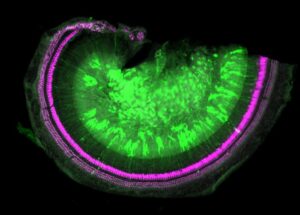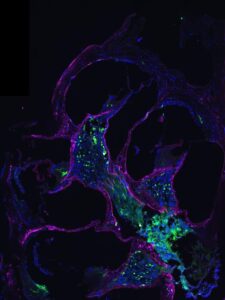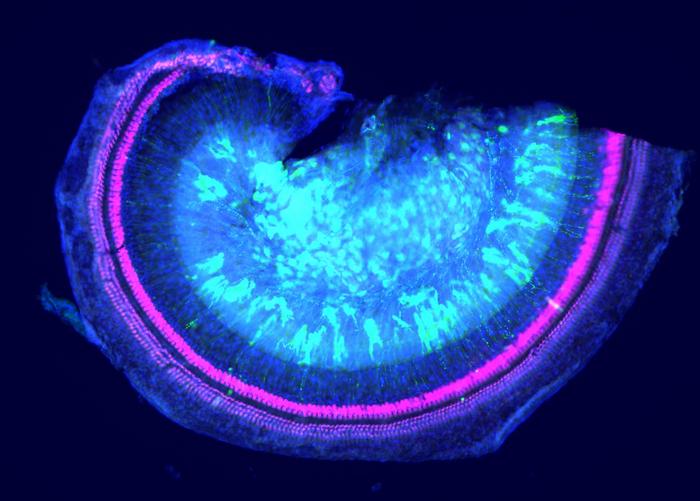Norrie disease is a rare, recessive, X-linked, genetic disorder. The devastating disease, caused by a mutation in the NDP gene, manifests as blindness at birth followed by progressive hearing loss starting from roughly 12 years of age. The result is debilitating, dual sensory, deprivation.
Now, an international team of researchers has developed a gene therapy that prevented the death of the vitally important hair cells in the cochlea—the snail shell-like part of the inner ear responsible for sensing sound—and significantly reduced the hearing loss associated with Norrie disease in mice.
This research is published in EMBO Molecular Medicine in the article, “Systemic gene therapy rescues retinal dysfunction and hearing loss in a model of Norrie disease.”
“We have previously shown that Norrie hearing loss coincides with loss of the sensory hair cells in the inner ear,” notes Valda Pauzuolyte, PhD, who completed the research at University College London Great Ormond Street Institute of Child Health. “While there may also be other factors involved, once lost, cochlear hair cells cannot regrow. This new work shows that NDP gene therapy can be very effective in preventing further damage to the hair cells and hearing in Norrie disease in mice.”

The treatment in neonatal Ndp-KO mice prevented retinal dysfunction and hearing loss in adult mice and rescued retinal and cochlea vasculature abnormalities. The neonatal treatment prevented the death of the sensory cochlear hair cells. The authors used RNAseq data and physiological measurements of auditory function to determine that the gene therapy also rescued cochlear disease biomarkers. In addition, they note that retinal vascularization and electroretinograms were restored to normal. In addition, the RNAseq data showed that dysregulated gene expression patterns in the Ndp-KO cochlea were normalized by AAV9 NDP gene therapy.
When the NDP gene therapy was administered after the onset of the degenerative inner ear disease, the authors note that it “ameliorated the cochlear pathology, supporting the feasibility of a clinical treatment for progressive hearing loss in people with Norrie disease.”

“I hope that gene therapy for hearing loss caused by faulty genes will soon be available for patients,” adds Jane Sowden, professor of Developmental Biology & Genetics at UCL Great Ormond Street Institute of Child Health. “In this study we were able to reduce the progressive hearing loss in a Norrie disease model by gene therapy for the first time. The treatment in mice was successful not only for newborns but also when we treated at a stage comparable to children and young people. This is exciting progress as it lays the groundwork for future application in patients— this could be transformative for them and their families and carers.”


